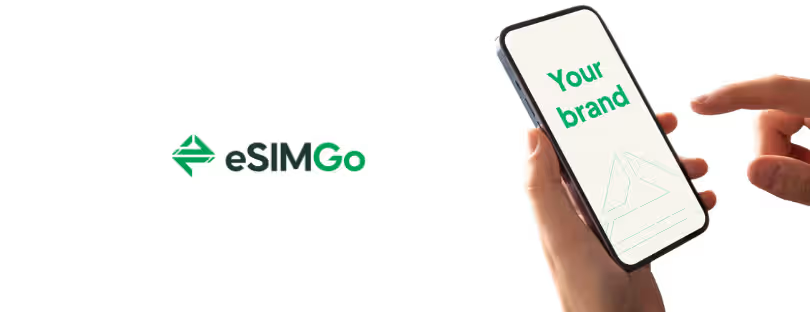
A Guide to Protect Yourself from QR Code Scams
In an era where convenience is paramount, QR codes have become an integral part of our daily lives, facilitating swift access to information and services. However, with the increasing prevalence of QR code scams, the need for vigilance is more critical than ever.
In 2020, the European Union Agency for Cybersecurity (ENISA) issued a report highlighting the potential security risks associated with QR codes. The report noted that malicious actors could exploit QR codes to redirect users to phishing websites, install malware on their devices, or steal their personal information.
The US Federal Trade Commission (FTC) has raised a red flag, underscoring the importance of taking precautions to use QR codes safely.
How Does the QR Code Scam Take Place?
QR codes, short for quick response codes, are handy tools that automatically open a web browser or app when scanned using a phone camera. While businesses and services widely employ QR codes for legitimate purposes such as payments and menu access, scammers exploit the trust associated with QR codes to execute fraudulent activities.
QR code fraud occurs when scammers masquerade as buyers on online sale platforms. To initiate the scam, they provide a QR code to the victim, claiming it is for making an advance or token payment. Through WhatsApp or email, the fraudsters send a QR code they have created and instruct the victim to scan it. The victims, trusting the scammers, scan the QR codes in the hope of receiving money directly into their bank accounts. Unfortunately, instead of gaining money, they end up losing it.
One notorious scam involves the placement of counterfeit QR codes on parking lot kiosks, leading unsuspecting individuals to deceptive websites that divert funds to fraudulent accounts rather than legitimate parking garage accounts. Furthermore, scammers employ QR codes in phishing emails, capitalizing on the challenge of identifying malicious links when embedded as images.
How to safeguard against QR code scams?
To shield yourself from falling victim to QR code scams, consider the following guidelines:
- Verify the URL. After scanning a QR code, it is crucial to verify that it leads to the official URL of the site or service. Scammers often employ domain names that closely resemble legitimate ones, exploiting the potential for oversight.
- Check for Tampering. Before using a QR code from a menu, parking garage, vendor, or charity, inspect it for any signs of tampering. Look for stickers placed on the original code, as scammers may attempt to redirect unsuspecting users.
- Be Wary of Email QR Codes. Exercise caution when encountering QR codes embedded in email bodies. Legitimate sites or services generally use links instead of QR codes in emails, making the latter a potential red flag for phishing attempts.
- Use Built-In Scanners. Opt for using the built-in QR code scanners within your smartphone’s camera app. Standalone QR code scanner apps may pose unnecessary risks, and the built-in options are typically more trustworthy.
- Caution with Two-Factor Authentication QR Codes. When dealing with QR codes for two-factor authentication, tread carefully. These QR codes provide secret seed tokens, and exposure could compromise security. In the event of exposure, promptly re-enroll to maintain the integrity of your security measures.
The FTC’s warning emphasizes the need for consumers to exercise caution and be vigilant when scanning QR codes. Following these guidelines, individuals can safeguard themselves from scams and security threats. This advisory mirrors alerts issued by the FBI almost two years ago, highlighting the persistent nature of QR code-related scams. As QR codes play a significant role in our digital interactions, staying informed and adopting best practices are essential for a secure online experience.
No QR Code Scams At Keepgo!
Keepgo prioritizing your online security. When you purchase this eSIM, you receive a unique single-usage QR code delivered directly to your email inbox. In addition, Keepgo ensures the confidentiality of your web browsing sessions through its Privacy IP feature, which is available for all our lines. Moreover, when topping up your lines, you can maintain your identity’s privacy by leveraging our support for cryptocurrency payments.
It’s worth noting that we neither require any form of identification nor bind you with contracts to access Keepgo services. Millions of clients have attested to the convenience and reliability of our services globally. If you haven’t yet experienced the benefits of a KeepGo line, we invite you to explore our prepaid Internet bundles.
Recommendations for the safe use of eSIM QR codes:
-
Only scan QR codes from trusted sources: Always check the source of a QR code before scanning it, and avoid scanning codes from public spaces or unsolicited emails or messages.
-
Only scan QR codes from reputable providers: Only scan QR codes from trusted eSIM providers or official websites.
-
Check the destination URL before proceeding: Once you’ve scanned a QR code, take a moment to review the destination URL before clicking on it. If the URL looks suspicious or doesn’t match the source of the QR code, don’t proceed.
-
Keep your device’s security software up to date: Regularly update your antivirus and anti-malware software to protect your device from malicious QR codes.
Conclusion
While eSIM QR codes can be a convenient and secure way to activate eSIM profiles, it is important to be aware of the potential risks and take precautions to protect yourself. By following the recommendations above, you can help minimize your risk of being compromised.















